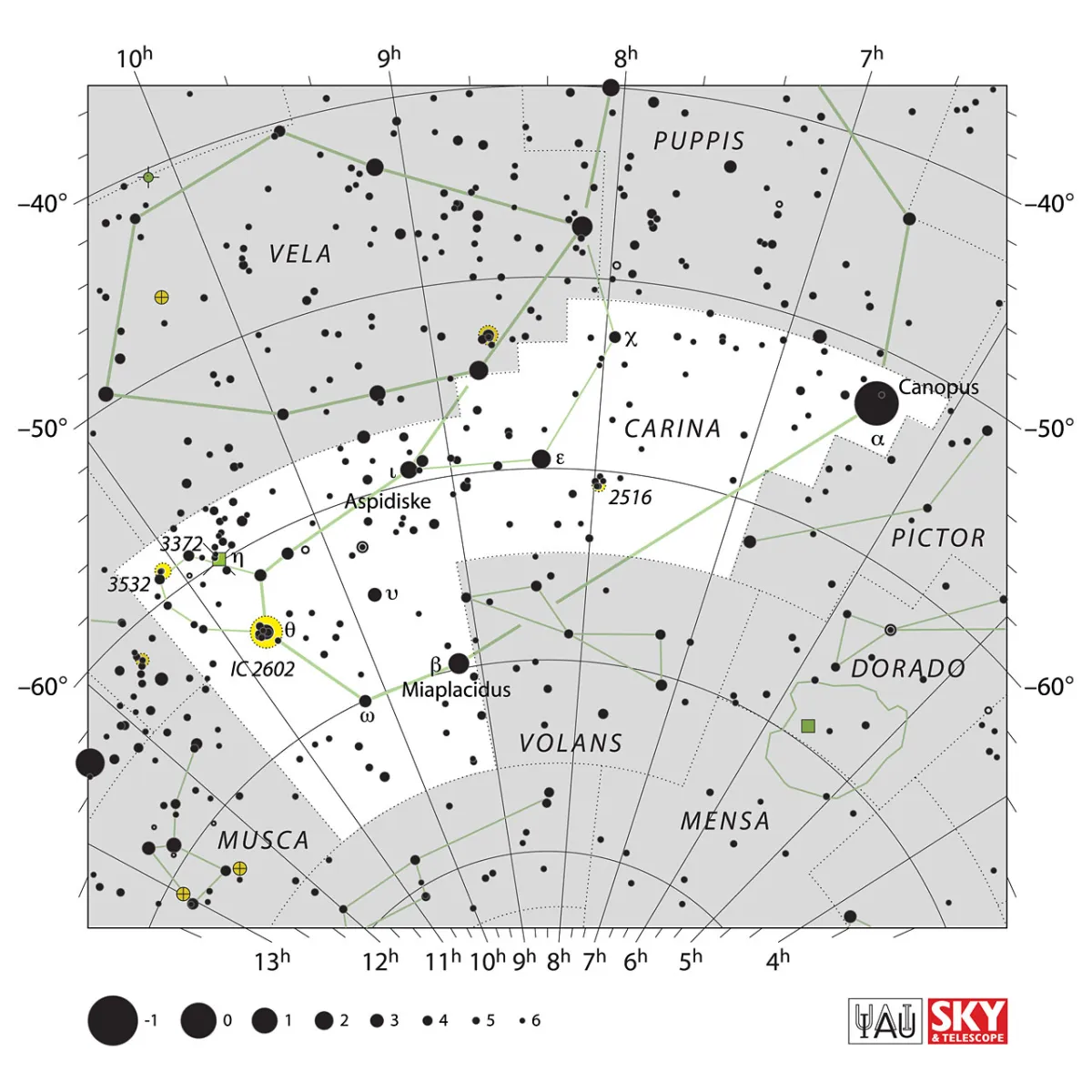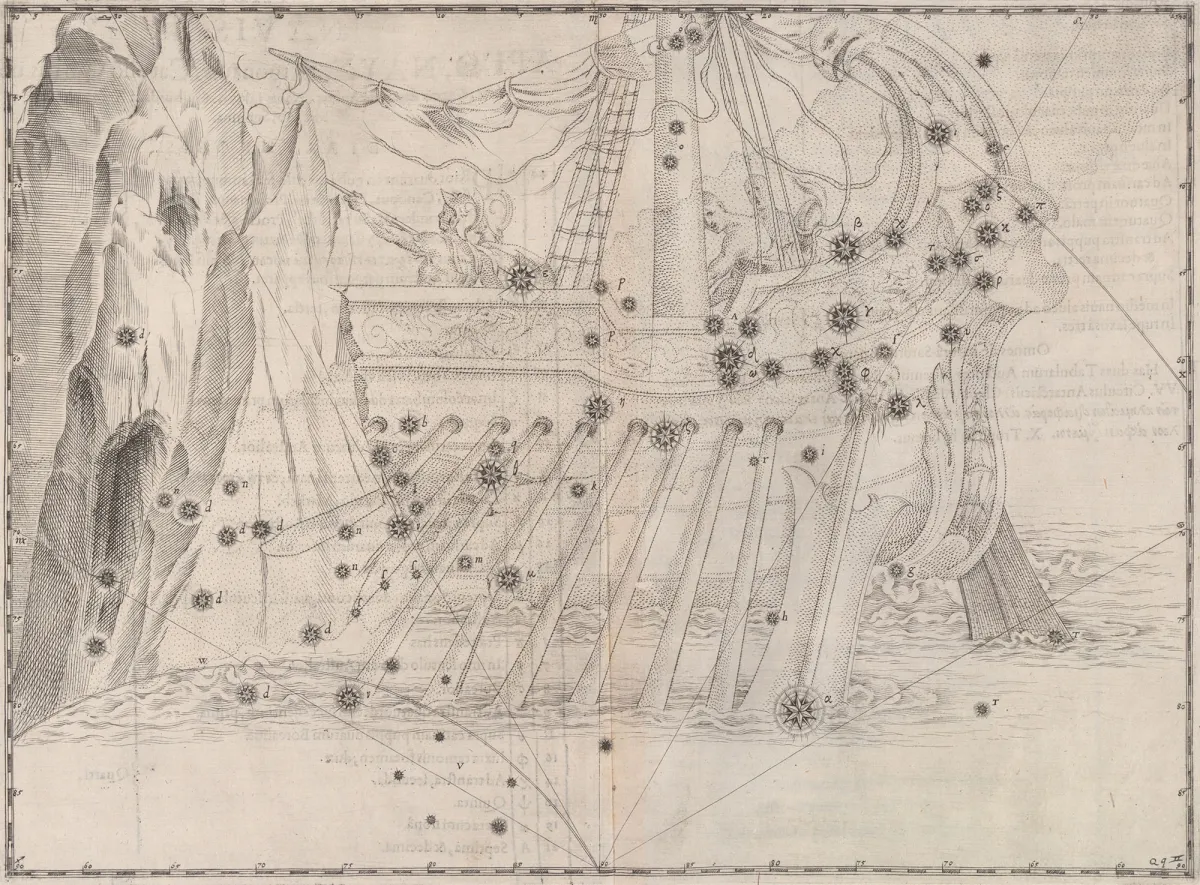Constellation Carina (Keel)

Properties
The band of the Milky Way runs through the eastern part of Carina and so you can find many star clouds and clusters with binoculars. The stars iota and epsilon Carinae together with kappa and delta Velorum form the false cross, which is often mistaken for the cross of the south further east. In contrast to the real one, the false cross does not point towards the south celestial pole. Carina encloses an area of 494 square degrees in the sky. The centre culminates around midnight on January 30th. [9, 15]
| α Car | Canopus, Suhel, Suhail |
| β Car | Miaplacidus |
| ε Car | Avior |
| ι Car | Turais, Tureis, Scutulum, Aspidiske |
| IAU Name | Carina |
| IAU Genitive | Carinae |
| IAU Abbr. | Car |
| English Name | Keel |
| Culmination at local midnight | 23 January |
| Season (Latitude +0.0°) | October … June |
| Right Ascension (J2000.0) | 06h 02m 46s … 11h 20m 37s |
| Declination (J2000.0) | -75° 41' 02" … -50° 45' 16" |
| Area | 494 deg2 |
| Neighbours (N↻) | Vel, Pup, Pic, Vol, Cha, Mus, Cen |
Deep-Sky Object Descriptions
Catalogues

Mythology and History
Carina, the ship's keel, is the southernmost part of what was once the magnificent, sprawling constellation of Argo Navis, the legendary ship of Jason and his Argonauts, who set out in search of the Golden Fleece of Aries. In the middle of the 17th century, however, the French astronomer Nicolas Louis de Lacaille tore it apart into four parts - Carina, Puppis (aft deck), Pyxis (ship's compass) and Vela (ship's sails). The brightest stars of the four sub-constellations of Argo Navis still have a continuous designation with Greek letters, as Johann Bayer had already included the constellation in his uranometria earlier. [7]
An interesting example where language, myth and modern science intersect: the most recent celestial navigators use Carina's brightest star, Canopus, to keep their space probes on a stable course through the solar system. Canopus is not only suitable for this task because of its brightness (the second brightest fixed star), but it is also almost normal to the plane of the solar system, i.e. close to the southern ecliptic pole. [87]